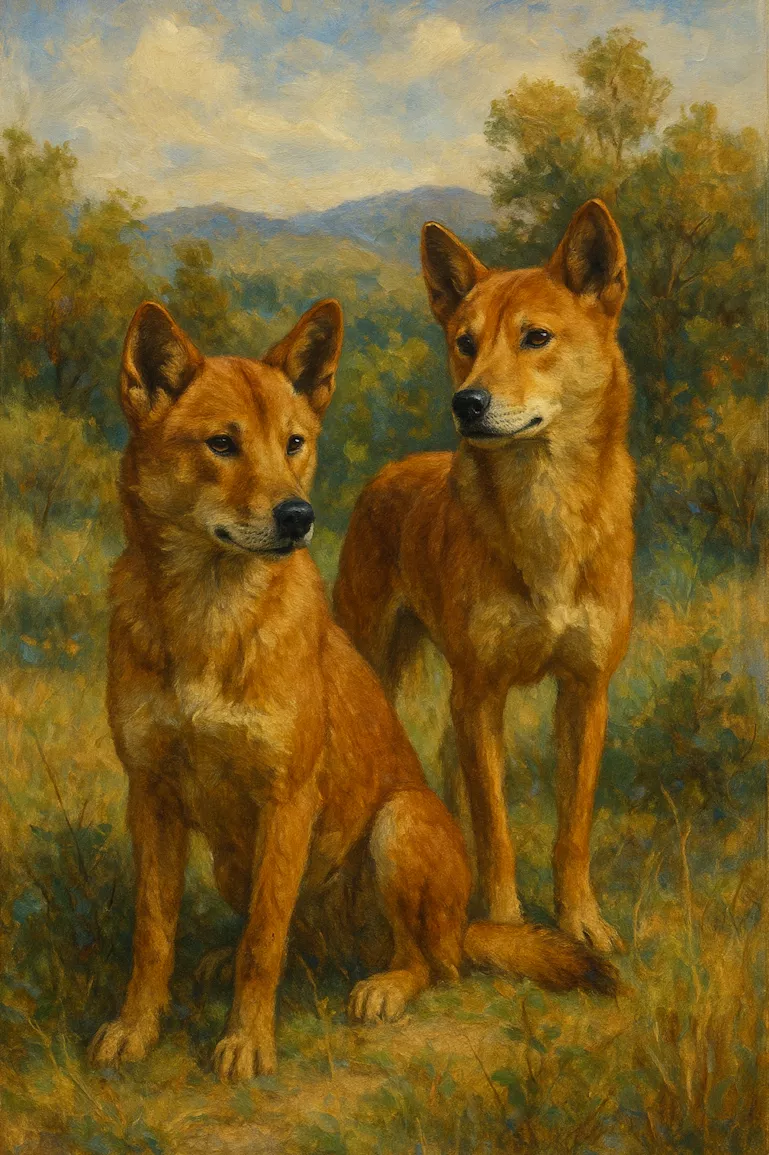The New Guinea Singing Dogs—famous for their eerie, whale-like howls—were once believed extinct in the wild.
But that narrative changed in 2020, when field biologists uncovered genetic evidence confirming that wild New Guinea Singing Dogs still roam the remote highlands near Indonesia‘s Grasberg mine. One of the world’s most elusive canines had made a dramatic return.
Table of Contents
On the Trail of a Legendary Dog
Conservationist James “Mac” McIntyre first encountered these dogs in photographs from 2012. Based on that, his team returned in 2016 and set up trail cameras near 4,300 meters (14,100 feet) above sea level. On the final day of monitoring, a pack appeared—slender, short‑legged, fox‑faced—confirming that wild dogs still roamed the region. In a follow-up expedition in 2018, researchers humanely captured and released two of the animals after collecting blood samples. Genetic analysis confirmed what had been hoped: these highland dogs match captive singing dogs nearly to the genetic code.
What the DNA Revealed
Scientists in Texas compared around 200,000 genetic markers from wild highland dogs with DNA from captive New Guinea Singing Dogs and hundreds of other breeds. The result: the captive animals descend from just eight founders and are severely inbred. Yet wild highland dogs retain much greater genomic diversity—and belong to the same ancient dog lineage.
Sounds Like a Yodel
True to their name, the New Guinea Singing Dogs vocalize in a way unlike any other canid. Their howl shifts pitch rapidly—middle frequencies rising and falling in under a second—and can last three to five seconds. In chorus, one dog starts a yodel‑like call and mates or other pack members respond in harmonized overtones. Spectrogram analysis often shows five to eight distinct overtones in a single howl.
Life in the High Mountains
Reports from locals and biologists indicate that the New Guinea Singing Dogs live as solitary hunters or in bonded pairs—not in large packs. They inhabit alpine grasslands, mossy forests, and shrubland between roughly 2,500 and 4,700 meters (about 8,200 to 15,400 feet) elevation. Their flexible joints and spine allow them to move with surprising agility—jumping, climbing, and twisting in ways more typical of wild cats than dogs.
Typical prey includes small marsupials (like cuscus and wallabies), birds, rodents, and occasionally eggs or food stolen from Papuan eagle’s nests. Observers say the dogs are intelligent, wary, and resourceful scavengers, willing to cover rugged terrain in search of meals.

Conservation Stakes: Science Meets Urgency
Before 2020, nearly all evidence of the New Guinea Singing Dogs came from captivity. Roughly 200 to 300 individuals live today in zoos or conservation programs—and all are descendants of those original founder dogs from the 1950s and ’60s.
But with almost no genetic variation, those captive dogs face risks from inbreeding and low fertility. Conservationists now hope to selectively breed them with wild highland dogs to introduce new genetic diversity. This step could prevent loss of the species altogether.
Why It Matters
These singing dogs hold scientific and cultural importance. Biologically, they offer a window into early dog domestication in Oceania—they belong to a “basal lineage,” meaning they branched off near the root of human‑associated dog evolution . Behaviorally, their strange vocal abilities offer a rare case for studying mammalian vocalization—marked by rapid pitch modulation and overlapping choral howls, features that fascinate both biologists and musicians.
Culturally, Indigenous communities in New Guinea have long believed these dogs carry ancestral spirits, recognizing individual dogs by their songs.
Direct Ferries
Routes, Schedules, Prices
Ferries in Australasia
What Comes Next
Researchers and conservation groups, including the New Guinea Highland Wild Dog Foundation, are actively working to map wild populations, secure habitat protections, and design managed breeding programs.
However, the species faces serious threats, including mining near its alpine habitat, deforestation for palm oil, climate change, and genetic dilution from interbreeding with village dogs. Because the wild highland population lacks formal legal protection and has not been evaluated by the IUCN, conservation efforts rely heavily on scientific urgency and international cooperation.

